DSP | Z-Domain | Z-Transform
Calculators Theory Z-Domain Filters
Z-Transform Z-Transfer Impulse Response Transfer Function
← Back to Digital Signal Processing
The Z-Transform (ZT) is a mathematical tool which is used to convert the difference equations in time domain into the algebraic equations in z-domain.
The Z-Transform may be of two types; unilateral (or one-sided) and bilateral (or two-sided). For discrete signal processing, we typically focus on the unilateral, right-sided transform.
If \(x(n)\) is a discrete-time signal or sequence, its uni-lateral Z-Transform is defined as;
\[Z[x(n)] = X(z) = \sum_{n=0}^\infty x(n)z^{-n}\]You can establish a connection between the discrete-time Fourier Transform and the Z-Transform through the polar form of \(z\).
\[X(z)|_{z=re^{j \hat{\omega}}} = X(re^{j \hat{\omega}}) = \sum_{n=0}^\infty x[n](re^{j \hat{\omega}})^{-n}\] \[= \sum_{n=0}^\infty(x[n]r^{-n})e^{-j \hat{\omega} n} = F\{x[n]r^{-n}\}\]When \(r = 1\), this evaluates \(X(z)\) over the unit circle as \(\omega\) varies.

Region of Convergence (ROC)
The set of points in the z-plane, for which the Z-transform of a discrete-time sequence \(x(n)\), that is \(X(z)\) converges is called the region of convergence (ROC) of the Z-transform \(X(z)\).
For any given discrete-time sequence, the Z-transform may or may not converge. If there is no point in the z-plane for which the function \(X(z)\) converges, then the sequence \(x(n)\) is said to be having no z-transform.
Z-Transform Theorems
The following table provides common transform theorems which can help quickly convert from the time domain to the z-domain. Transform theorems can be applied generally to any signal.
| Property | x[n] | X(z) | ROC |
|---|---|---|---|
| Linearity | ||ax_{1}[n] + bx_{2}[n]|| | ||aX_{1}(z) + bX_{2}(z)|| | at least ||R_{x_1} \cap R_{x_2}|| |
| Delay (time shift) | ||x[n-n_{0}]|| | ||z^{-n_{0}} X(z)|| | ||R_{x}||, maybe exclude 0 or ||\infty|| |
| Differentiation | ||nx[n]|| | ||-z\frac{dX(z)}{dz}|| | ||R_{x}||, maybe exclude 0 or ||\infty|| |
| Conjugation | ||x^{*}[n]|| | ||X^{*}(z^{*})|| | ||R_{x}|| |
| Convolution | ||x_{1}[n]*x_{2}[n]|| | ||X_{1}(z)X_{2}(z)|| | at least ||R_{x_1} \cap R_{x_2}|| |
| First difference | ||x[n]-x[n-1]|| | ||(1-z^{-1})X(z)|| | at least ||R_{x} \cap \{|z|>0\}|| |
| Accumulation | ||\sum_{k=-\infty}^{n} x[k]|| | ||\frac{1}{1-z^{-1}} X(z)|| | at least ||R_{x} \cap \{|z|<\infty\}|| |
| Initial value | ||x[0] = \lim_{z\to\infty}X(z)|| | ||
| ||R_{x}|| is the ROC of ||x[n]||, and so on | |||
Z-Transform Pairs
The following table provides common transform pairs which can help quickly convert from the time domain to the z-domain. Transform pairs involve a specific signal and corresponding z-transform. The transform pairs in this section emphasize right-sided signals and causal systems.
| x[n], ||n \geq 0|| | X(z) | ROC |
|---|---|---|
| ||\delta[n]|| | ||1|| | |||z| > 0|| |
| ||au[n]|| | ||\frac{az}{z-1}|| | |||z|>1|| |
| ||nu[n]|| | ||\frac{z}{(z-1)^{2}}|| | |||z|>1|| |
| ||n^{2}u[n]|| | ||\frac{z(z+1)}{(z-1)^{3}}|| | |||z|>1|| |
| ||a^{n}u[n]|| | ||\frac{1}{1-az^{-1}} = \frac{z}{z-a}|| | |||z|>|a||| |
| ||-a^{n}-u[-n]|| | ||\frac{1}{1-az^{-1}} = \frac{z}{z-a}|| | |||z|<|a||| |
| ||(n+1)a^{n}u[n]|| | ||\frac{1}{(1-az^{-1})^{2}} = \frac{z}{(z-a)^{2}}|| | |||z|>|a||| |
| ||na^{n}u[n]|| | ||\frac{a}{(1-az^{-1})^{2}} = \frac{az}{(z-a)^{2}}|| | |||z|>|a||| |
| ||e^{-na}u[n]|| | ||\frac{z}{(z-e^{-a})}|| | |||z|>e^{-a}|| |
| ||r^{n}cos(\hat{\omega}_{0}n)u[n]|| | ||\frac{1-(r \cdot cos(\hat{\omega}_{0})z^{-1}}{1-(2 \cdot r \cdot cos(\hat{\omega}_{0})z^{-1}+r^{2}z^{-2}}|| | |||z|>r|| |
| ||r^{n}sin(\hat{\omega}_{0}n)u[n]|| | ||\frac{1-(r \cdot sin(\hat{\omega}_{0})z^{-1}}{1-(2 \cdot r \cdot cos(\hat{\omega}_{0})z^{-1}+r^{2}z^{-2}}|| | |||z|>r|| |
| ||a^{n}(u[n] - u[n-N])|| | ||\frac{1-a^{N}z^{-N}}{1-az^{-1}}|| | |||z|>0|| |